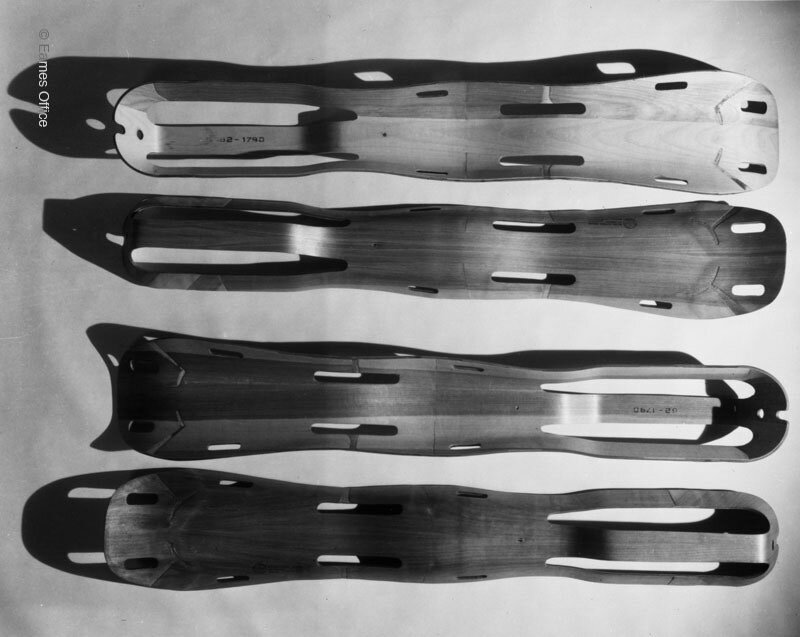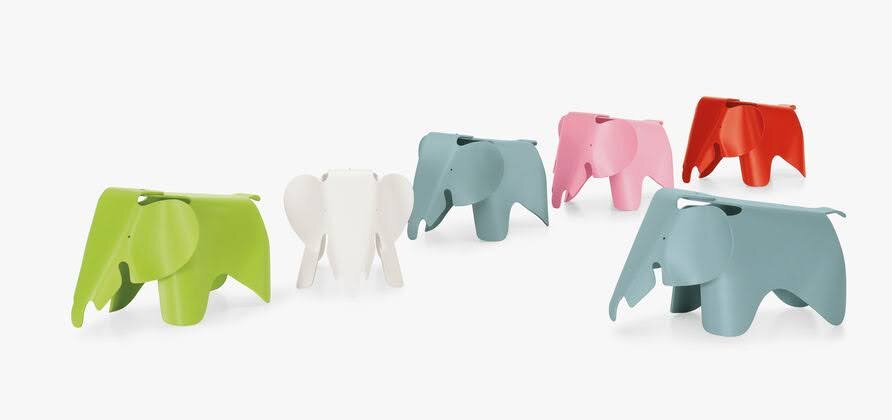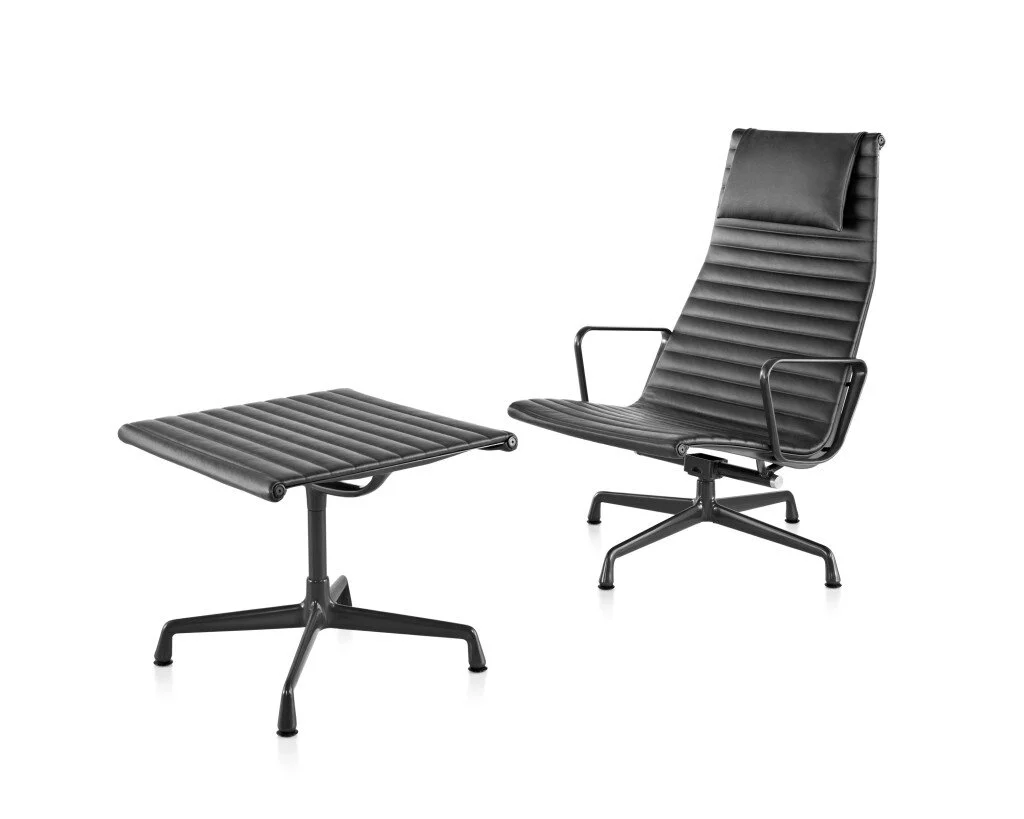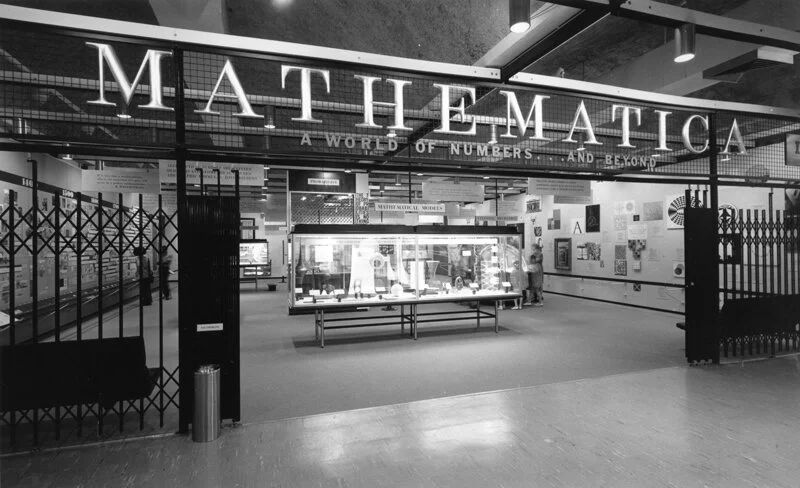Designs Worth Knowing - I: Charles and Ray Eames
Series: Designs Worth Knowing
Part: I
“What works good is better than what looks good, because what works good lasts.” – Ray Eames
“The role of the designer is that of a very good, thoughtful host anticipating the needs of his guests.” – Charles Eames
American husband-wife duo, Charles and Ray Eames are amongst the most notable names of designers from the 20th century. Charles and Ray had backgrounds with formal training in Architectue and Painting, respectively. Together, they worked and produced some of the most iconic architecture designs, furniture designs, industrial designs and manufacturing, photographic arts and all things design.
Charles and Ray Eames is the first of our series ‘Designs Worth Knowing’ where we will be delving beyond architecture to cover the designs and works of renowned architects and designers. Here’s a glimpse into some of their designs, processes and explorations below.
1. Leg Splint - 1943
In 1942, officers serving in World War 2 required emergency transport splints. More harm was caused than good by the metal splints which were being used, as they transferred vibrations from the stretcher bearers to the injured limbs. Charles and Ray started to develop a new device by using resin glue to shape wood veneers into compound curves. A process of heat and pressure was used for this. Slats within these splints allowed cloth to be passed through to secure the patient’s leg.
An ink stamp of Eames Process was borne by each of these splints.
2. LCW and LCM - 1945
First designed in 1945, the chair was part of an exploration of the limits of molded plywood as a material. Although initially meant to be a single-piece shell in complex curves, eventually the seat and back had to be separated because a split always had to be made to make the chair work. It took them 5 years to uncover the honest use of molded plywood. The legs of the chair were made from curved plywood and metal.
The TIME Magazine called it ‘the chair of the century’.
3. Eames Elephant - 1945
In 1945, while they experimented with molded plywood and complex curves, Charles and Ray designed a group of animals for children to sit on. Two elephant prototypes were developed and displayed at the Museum of Modern Art in 1946. The elephants were never mass produced during the Eameses lifetime.
In 2007, VITRA released 2000 plywood elephants - 1000 natural and 1000 red - to mark Charles’ centennial. They also released plastic elephants for children to enjoy not long after that.
4. Eames La Chaise - 1948
The Eames La Chaise was designed in 1948 for the ‘International Competition for Low-Cost Furniture Design’ organized by the Museum of Modern Art. Ironically, it was never sold during their lifetime since it proved too costly to produce. In 1996, VITRA started manufacturing the Eames La Chaise in response to public interest and demand.
The name itself refers to its function and Gaston Lachaise’s famous Floating Figure, which inspired the design of the chaise. Two bonded fiberglass shells, a chromed based and natural oak feet make up the chaise.
5. Eames Fiberglass Armchair - 1950
Developed in 1950, the fiberglass seating was designed for the Low Cost Furniture Design competition organized by the Museum of Modern Art. It was the first industrially produced chair made from fiberglass.
The organic shape of the chair had integrated arm rests. To ensure durability and avoid chipping and flaking, the Eameses’ opted for integral colours - which completely permeate the material by forcing themselves around the glass fibers - and not applied colours for these chairs. Moreover, to keep manufacturing costs and thereby, end product costs in check for the end user, the chairs were only released in three colours initially - Elephant Hide grey, Parchment and Greige (grey - beige). These neutral colours had been picked for the chairs to fit the greatest number of environments. Gradually, red, sea foam green, and lemon yellow had been introduced.
Herman Miller reported that by 1966; 2,000,000 chairs had already been sold. The demand was increasing every year.
6. Eames Wire Chair - 1951
The Wire chair was conceived in 1951 during the Eameses’ experiments with the single-shell reinforced polyester chairs. Charles and Ray had already been experimenting with bent and welded wire in the 1950s. As is evident when comparing photographs, the Eames Wire Chair - inspired by trays, dress forms, and baskets - is a variation on the theme of one-piece seat shell.
The chair was available without upholstery, with seat cushion, and with seat and back cushion. During that time, even the design and production of machinery for making furniture was being done in the Eames office. In the initial production stage, office fellows made and operated the jigs and fixtures needed for building up the upholstered pads.
7. Eames Fiberglass Side Chair - 1951
The Eames Fiberglass Side Chairs were produced in 1951, after the fiberglass armchairs in 1950. The design was more challenging since, without the arms, the edges where the back and seat met tended to crack. These came in four options for the bases - wire, dowel leg, 4 leg, and stacking.
Herman Miller is once again producing the original chairs using a safe, monomer-free ‘dry bind’ process. Tell-tale striations and surface variations still characterize these chairs, just like the original ones. The Herman Miller Take Back Program also recycles these chairs at the end of their useful life.
8. Eames Lounge Chair and Ottoman - 1956
First released in 1956, the Eames Lounge Chair and Ottoman are a part of the permanent collection of furnishings in the Museum of Modern Art, New York.
Made of three curved plywood shells covered in veneer, this chair was the first high-end piece of furniture designed by the Eameses’. Factory technology, and intricate hand labour and craftsmanship come together in these icons of mid-century modern design. The Lounge and Ottoman are often referred to as 670/671 after the Herman Miller part numbers used to make the seating - the Lounge is 670 and Ottoman is 671.
9. Eames Aluminium Group - 1958
Eero Saarinen has asked the Eameses to develop the Eames Aluminium Group Collection as a special project for the Irwin Miller House in Columbus, Indiana with Alexander Girard. Developed in 1958, these chairs are very popular in interiors despite the inspiration for them having developed from the need for high-quality outdoor seating.
Charles and Ray referred to these chairs as the ‘leisure group’ and the ‘indoor-outdoor group’. This shows their dedication and continued efforts to address as many needs as possible. Representing a major departure from their concept of chair as a solid shell, these chairs were the first instance where aluminium was used for structural side members.
10. Eames Plastic Armchair and Side Chair - 1961
The Eames Plastic Armchairs and Side Chairs were renewed versions of the Fiberglass Chairs from 1950-51. Produced in 1961, these were made of polyproylene and were 100% recyclable. The shells came in varied colour options and the bases in 4 options - wire, dowel leg, 4-leg, and stacking.
The Eameses’ also have an extensive portfolio of work on Multimedia and Films (they made 125 short films in their lifetime), Exhibition design, Architecture, Graphic design, Textiles, and Art.
Exhibition: Mathematica - 1961
In 1961, the first ever show organized by the Eames Office was inaugurated in the California Museum of Science and Industry’s new wing. The exhibiton stayed in place for 37 years, till the building was closed and demolished in 1998. Since then, the exhibition has traveled. It is currently on display in three versions at the Museum of Science in Boston, Massachusetts; the New York Hall of Science, in Queens, New York; and most recently, The Henry Ford Museum in Dearborn, Michigan.
An observation from the early days of their research fascinated the Eameses - ‘Though most people think of mathermatics as being about numbers, the world of numbers actually represents just about one percent of the world of mathematics.’ Mathematica: A World of Numbers…and Beyond, with its interactive components and a forty-foot long timeline of the ‘Men of Modern Mathematics’ among other things, was designed to make that idea extremely vivid to the visitor. The beauty of this exhibition combined with the multilayered exploration of how mathematics shape our world draws visitors till the present day.
Multimedia and Film: Powers of Ten and the Relative Size of Things in the Universe - 1977
Produced in 1977, this 9 minute, colour film by the Eameses’ is one of their best known films. It is based on the 1957 book, Cosmic View: The Universe in Forty Jumps, by Kees Boeke. To investigate the relative size of things and the impact of adding zero to any number, a system of exponential powers was used to visualize the importance of scale.
Starting with a close-up shot of a sleeping man from 1 meter away, the visuals move out of the landscape revealing the edge of the known universe. From there, at the rate of 10-to-the-tenth meters per second, the film closes in on the man’s hand and then goes further down to a carbon atom.
Being considered ‘culturally, historically, and aesthetically significant’, the Library of Congress selected this film for preservation in the United States National Film Registry in 1998.
Recommended further study:
As part of the Case Study House Program sponsored by the Arts & Architecture magazine, the Eameses designed and built their own home in California and lived there for their entire lives. Known as the Case Study House 8, their home is now a historic landmark visited by people from all over the world.
References and Credits:
Author:
Nirali Prajapati
Associate | Pun: Chat


















